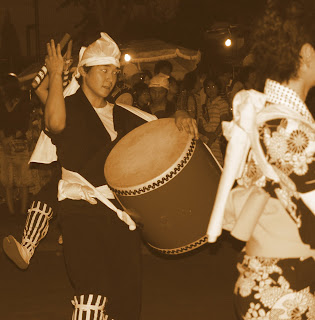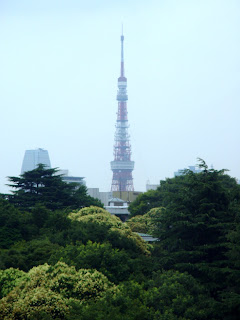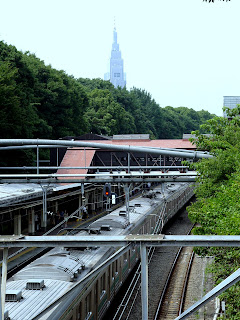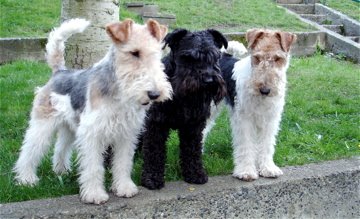Check out San Francisco, picture by picture.
Might take a bit to load, but it lets you pick a spot on the map and then see in 360 degrees what is at that spot. I'm probably not describing this very well, but it's pretty cool.
San Francisco
Saturday, July 28, 2007
2008 Presidential Election Cliff Notes
2008 Presidential Election Candidates on the Issues
This site is a one page summary of each of the candidates stances on (the media's) key issues. Thought I'd share.
This site is a one page summary of each of the candidates stances on (the media's) key issues. Thought I'd share.
Friday, July 27, 2007
Me and Julio
To all the Blogs I Loved Before,
Who never update their stuff no more,
I dedicate this song,
What the heck has gone wrong?
With all the blogs I've loved... Before.
To all the prose I once enjoyed,
There's nothing new; I'm quite annoyed.
A few words now and then,
To reach out to your friends
Instead of this creative void...
:j
Who never update their stuff no more,
I dedicate this song,
What the heck has gone wrong?
With all the blogs I've loved... Before.
To all the prose I once enjoyed,
There's nothing new; I'm quite annoyed.
A few words now and then,
To reach out to your friends
Instead of this creative void...
:j
Wednesday, July 25, 2007
In the New(s): Bon Odori Festival ...and Sumo"ch" More!
Japan Sumo Association officials made a unanimous decision to promote Sekiwake Kotomitsuki to the rank of ozeki on Wednesday, marking the first time since the 2006 spring tournament that a wrestler has been given the rank.
Officials made the decision following a board of directors meeting in Nagoya and a meeting to determine the rankings for the September Grand Sumo Tournament.
Kotomitsuki, whose real name is Keiji Tamiya belongs to the Sadogatake stable. He is the 16th wrester in the Heisei period to be promoted to the rank of ozeki, after Hakuho was given the rank following last year's spring tournament. At 31 years and 3 months, he is also the oldest wrestler to be promoted to the rank of ozeki since the system of six tournaments per year was established in 1958. The previous record was held by Masuiyama, who was 31 years, 2 months old at the time.
Originally a Nenbutsu folk dance to express the effusive welcome for the spirits of the dead, the style of celebration varies in many aspects from region to region. Each region has a respective local Bon dance, as well as respective music accompanying the dance. The music accompanying the dance can be songs specifically pertinent to the spiritual message of Obon, or local min'yo folk songs. Consequently, the Bon dance will look and sound different from region to region.
The dance of a region can depict the area's history and specialization. For example, the movements of the dance of the Tanko Bushi (the "coal mining song") of old Miike Mine in Kyuusu show the movements of miners, i.e. digging, cart pushing, lantern hanging, etc. Because everyone dancing performs the same feet and hand movements in unison, it really is an interesting and beautiful dance to behold.
There are other ways in which a regional Bon dance can vary. Some dances involve the use of different kinds of fans, others involve the use of small towels called tenugui which may have colorful designs. Some require the users to use small wooden clappers they use during the dance. The "Hanagasa Odori" of Yamagata is particularly interesting, for its dancers use a flower-decorated hat or "hanagasa" for the dance.
The music that is played during the Bon dance is not limited to Obon music and min'yo; some modern enka hits and kids' tunes written to the beat of the "ondo" are also used to dance to during Obon season. Particularly famous is "Pokemon Ondo", which was used as one of the ending theme songs for the Pocket Monsters anime series in Japan.
The Bon dance tradition is said to have started in the later years of the Muromachi period as a public entertainment. In the course of time, the original religious meaning has faded, and the dance has become associated with summer.
Lots of good food with fun and games for the kids and adults alike.
The below is a picture of Imiah san (spelling?) and Sally--the host of our pre-bon Odori festival festivities.
Bon Odori originates from the story of a Buddhist disciple who envisioned his deceased mother in the Realm of Hungry Ghosts where she was endulging in her own selfishness. Greatly disturbed, he went to Buddha and asked how he could release his mother from this realm.
Buddha advised his disciple to perform some charitable act in memory of his mother. The disciple did this and, thus, saw his mother's release for the Realm of Hungry Ghosts.
The way in which the dance is performed is also different in each region, though the typical Bon dance involves people lining up around a high wooden building made especially for the festival called a 'yagura'. The yagura is usually also the bandstand for the musicians and singers of the Obon music. Some dances proceed clockwise, and some dances proceed counter-clockwise around the yagura. Some dances reverse during the dance, though most do not. At times, people face the yagura and move towards and away from it. Still some dances, such as the Kagoshima Ohara dance, and the Tokushima Awa Odori, simply proceed in a straight line through the streets of the town.This Buddhist dance festival is celebrated as a reminder of the gratefulness one should feel toward their ancestors.
The Woman on the left below is Imiah san's wife. Imiah san is a very famous photographer.
To celebrate O-Bon in Okinawa, the eisa drum dance is performed instead.
Well, that is all I got. Hope it is well received.
:j
Officials made the decision following a board of directors meeting in Nagoya and a meeting to determine the rankings for the September Grand Sumo Tournament.
Kotomitsuki, whose real name is Keiji Tamiya belongs to the Sadogatake stable. He is the 16th wrester in the Heisei period to be promoted to the rank of ozeki, after Hakuho was given the rank following last year's spring tournament. At 31 years and 3 months, he is also the oldest wrestler to be promoted to the rank of ozeki since the system of six tournaments per year was established in 1958. The previous record was held by Masuiyama, who was 31 years, 2 months old at the time.
Kotomitsuki accepted the promotion without hesitation, "I respectfully accept. At all times I will fight with all my might, and devote myself to the path of sumo," the wrestler said. (Mainichi)
Originally a Nenbutsu folk dance to express the effusive welcome for the spirits of the dead, the style of celebration varies in many aspects from region to region. Each region has a respective local Bon dance, as well as respective music accompanying the dance. The music accompanying the dance can be songs specifically pertinent to the spiritual message of Obon, or local min'yo folk songs. Consequently, the Bon dance will look and sound different from region to region.
The dance of a region can depict the area's history and specialization. For example, the movements of the dance of the Tanko Bushi (the "coal mining song") of old Miike Mine in Kyuusu show the movements of miners, i.e. digging, cart pushing, lantern hanging, etc. Because everyone dancing performs the same feet and hand movements in unison, it really is an interesting and beautiful dance to behold.
There are other ways in which a regional Bon dance can vary. Some dances involve the use of different kinds of fans, others involve the use of small towels called tenugui which may have colorful designs. Some require the users to use small wooden clappers they use during the dance. The "Hanagasa Odori" of Yamagata is particularly interesting, for its dancers use a flower-decorated hat or "hanagasa" for the dance.
The music that is played during the Bon dance is not limited to Obon music and min'yo; some modern enka hits and kids' tunes written to the beat of the "ondo" are also used to dance to during Obon season. Particularly famous is "Pokemon Ondo", which was used as one of the ending theme songs for the Pocket Monsters anime series in Japan.
The Bon dance tradition is said to have started in the later years of the Muromachi period as a public entertainment. In the course of time, the original religious meaning has faded, and the dance has become associated with summer.
Lots of good food with fun and games for the kids and adults alike.
The below is a picture of Imiah san (spelling?) and Sally--the host of our pre-bon Odori festival festivities.
Bon Odori originates from the story of a Buddhist disciple who envisioned his deceased mother in the Realm of Hungry Ghosts where she was endulging in her own selfishness. Greatly disturbed, he went to Buddha and asked how he could release his mother from this realm.
Buddha advised his disciple to perform some charitable act in memory of his mother. The disciple did this and, thus, saw his mother's release for the Realm of Hungry Ghosts.
The way in which the dance is performed is also different in each region, though the typical Bon dance involves people lining up around a high wooden building made especially for the festival called a 'yagura'. The yagura is usually also the bandstand for the musicians and singers of the Obon music. Some dances proceed clockwise, and some dances proceed counter-clockwise around the yagura. Some dances reverse during the dance, though most do not. At times, people face the yagura and move towards and away from it. Still some dances, such as the Kagoshima Ohara dance, and the Tokushima Awa Odori, simply proceed in a straight line through the streets of the town.This Buddhist dance festival is celebrated as a reminder of the gratefulness one should feel toward their ancestors.
The Woman on the left below is Imiah san's wife. Imiah san is a very famous photographer.
To celebrate O-Bon in Okinawa, the eisa drum dance is performed instead.
Well, that is all I got. Hope it is well received.
:j
Tuesday, July 17, 2007
The Trip of Fifteen Hundred Buddhas
Some more pictures from Lilah's trip here. On one of our afternoons we went to see the Big Buddha at the Nihon-ji Temple in Chiba Prefecture, just a short distance from where we live. Sally was our tour guide; it was an area of stunning beauty and dizzying heights. Not to mention some 1500 Buddhas carved by master artisan Jingoro Eirei Ono and his 27 apprentices in the 1780s and 1790s. The trip took us most of the day and covered about two to three miles of numerous hills and trails, culminating in the giant Buddha, or Daibutsu. This Daibutsu of Yakushi Nyorai is twice the size of the Kamakura (another town not far from here) Daibutsu and Nara (I have not been to this one) Daibutsu, making it the largest of pre-modern Japan's existing Big Buddha statues. The Nihon-ji Temple itself dates back to 725 AD.
History lesson over. Here's the pictures: The first group is of the cable car and some of the picturesque paths taken to get to start of the statues.
History lesson over. Here's the pictures: The first group is of the cable car and some of the picturesque paths taken to get to start of the statues.
Monday, July 16, 2007
I'm Okay.
A magnitude-6.8 earthquake, centered 17 kilometers below sea level, struck just off the northwestern Japanese coast Monday morning, knocking down several small buildings, authorities reported.
Apparently the building shook a little bit today, but I was in a different building and didn't feel a thing. Click the underlined sentence above for the full story if you haven't heard about this yet. Don't worry, it's from CNN and is in English.
:j
Apparently the building shook a little bit today, but I was in a different building and didn't feel a thing. Click the underlined sentence above for the full story if you haven't heard about this yet. Don't worry, it's from CNN and is in English.
:j
Saturday, July 14, 2007
Typhoon, Schmi-phoon
All in all, the bru-ha-ha was all blown out by the time it got this far north. I know that there have been plenty of stories on the local news about the flooding and the damage from the typhoon down in the south, but for those of you who were worried about my humble abode... the shutters never even shook.
Otherwise, not a whole lot of news to share. Work is crazy after having taken the time off to spend with Lilah, on top of which we're entering a very busy time right now at work with the Mock Avail upcoming event and the Kitty Hawk Integrated Project Team Development course, IPTD, which is the new acronym for Project Management College, PMC, that I attended down in San Diego in February of this year.
I'm still feeling my way around the base and the work and the changes that are needed; to that end, a mentor arrived this past week, Doug Carson, from Puget Sound to help me try to piece together all the pieces and parts that need attention. Doug was my PEPM when I was down in San Diego as the Inside Shop Engineer for the USS NIMITZ. He's got a ton of experience and a pretty good head on his shoulders, so for the next month he'll be tagging along with me and giving me a nudge when I'm off the path. He's already imparted some good advice on the Hot Wash that we're doing next week and some of the personnel actions that I'm unfamiliar with.
So anyway, without much more to offer I'm going to add some more pictures from Lilah's trip. A special shout out to all of you who still check this blog, even with my sporadic posting. Oh, and Big Rob, I know you're watching!
:j
Tokyo area photos:
Shibuya-
Harajuku --
The Temple at Harajuku --
Otherwise, not a whole lot of news to share. Work is crazy after having taken the time off to spend with Lilah, on top of which we're entering a very busy time right now at work with the Mock Avail upcoming event and the Kitty Hawk Integrated Project Team Development course, IPTD, which is the new acronym for Project Management College, PMC, that I attended down in San Diego in February of this year.
I'm still feeling my way around the base and the work and the changes that are needed; to that end, a mentor arrived this past week, Doug Carson, from Puget Sound to help me try to piece together all the pieces and parts that need attention. Doug was my PEPM when I was down in San Diego as the Inside Shop Engineer for the USS NIMITZ. He's got a ton of experience and a pretty good head on his shoulders, so for the next month he'll be tagging along with me and giving me a nudge when I'm off the path. He's already imparted some good advice on the Hot Wash that we're doing next week and some of the personnel actions that I'm unfamiliar with.
So anyway, without much more to offer I'm going to add some more pictures from Lilah's trip. A special shout out to all of you who still check this blog, even with my sporadic posting. Oh, and Big Rob, I know you're watching!
:j
Tokyo area photos:
Shibuya-
Harajuku --
The Temple at Harajuku --
Until next post...
Subscribe to:
Posts (Atom)









































































